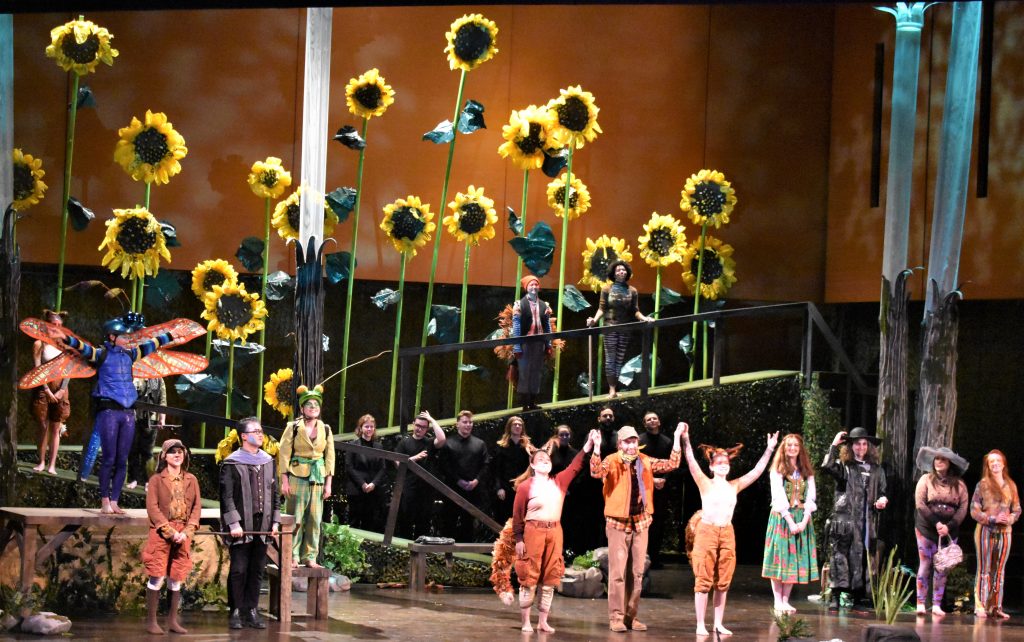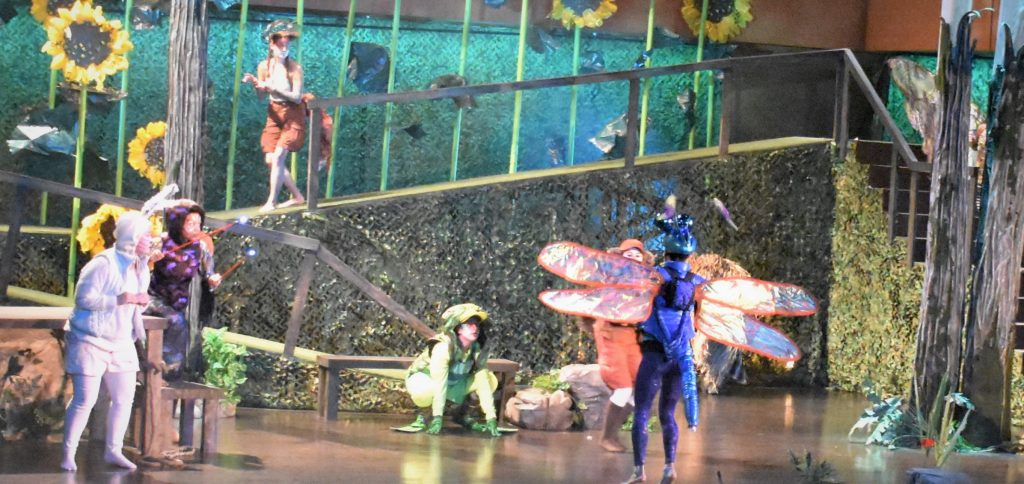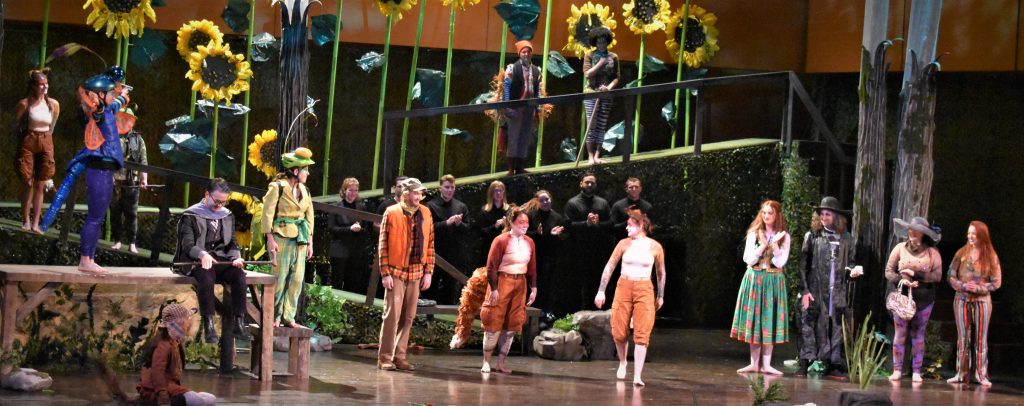
by Kevin T McEneaney
One does not usually attend opera to be amused but to revel in musical weaves of pathos, exultant-passionate love, or the ravages of social misrule. Yet Leoš Janáček’s opera The Cunning Little Vixen (1924) remains a comic jewel that continues to delight the world.
In three acts, childhood, young adulthood, and old age are addressed. This is the only opera fabricated from a serial newspaper cartoon—the funnies, as they were once called. The first act of witty antics and colorful costumes with mime resembles an elementary school pageant fable from Aesop: a charming allegory about animals and insects animates the world of childhood fantasy with adroit humor.
The second act focuses on the aura of youthful romance when the magic of spring fills the forest with an uncertain mating ambiance relative to the conundrum of marital commitment. In this act there is a gradual transition from allegory to traditional realistic drama with robust humor generating the transition.
In the third act, the allegoric fantasy dream-world gives way to tragedy and the fitful pathos of old age. The winsome, heroine vixen we all love is shot in the forest and its coat is made into a muff for a bride; this small village wedding is not likely to be happy and the old men of the village, who were infatuated by this gypsy beauty, turn to melancholy.

In the third act, the allegoric fantasy dream-world gives way to tragedy and the fitful pathos of old age. The winsome, heroine vixen we all love is shot in the forest and its coat is made into a muff for a bride; this small village wedding is not likely to be happy and the old men of the village, who were infatuated by this gypsy beauty, turn to melancholy.
The Prelude music of the third act encapsulates the boisterous, extroverted humor of the first two acts. The same melody is repeated in a different key at the climax of the fourth and final scene when the Forester wanders in the woods picking mushrooms as he recalls his youth and the journey of his life into old age. Here Conductor James Bagwell of The Orchestra Now delivered some of the most poignant music ever written—the volume and subtle shading of orchestral timbre was magnificent!
The dramatic meditation on the journey of life in Janáček’s libretto is certainly one of the great gems of opera experience and Jonathan Lawlor was memorable as the Forester with unexpected wisdom. Kirby Burgess, as the young Vixen, sang in such a delightful way that her voice rang in my ear the next morning. Lighting design by Masha Tsimring was superb. Dancing and costumes constituted an impish pleasure. Singers from the Bard Conservatory Graduate Vocal Arts Program showed with their vocal talent that they are tomorrow’s operatic stars!

This production, consummately designed and directed by Doug Fitch, was in English. While the translation was serviceable, it did not match the eloquence of the Czech language. I once heard at Bard (about three or four years ago) a student sing two short arias from the opera in the original language and I was stunned by the aural beauty.
I still have my old student copy of A Short History of Opera (1947) by Donald Jay Grout. In the last paragraph of that classic opus, he quotes the Irish opera buff James Joyce, then the final quotation with which the book concludes is from Janáček’s Forester: “life renews itself, and the nightingales return with each returning Spring to find their nests, and Love…always the same: where then was parting, now is meeting.”
Since the 100th anniversary of this most unusual opera will occur in two years, I imagine that there will be another opportunity to see and hear this extraordinary operatic marvel.